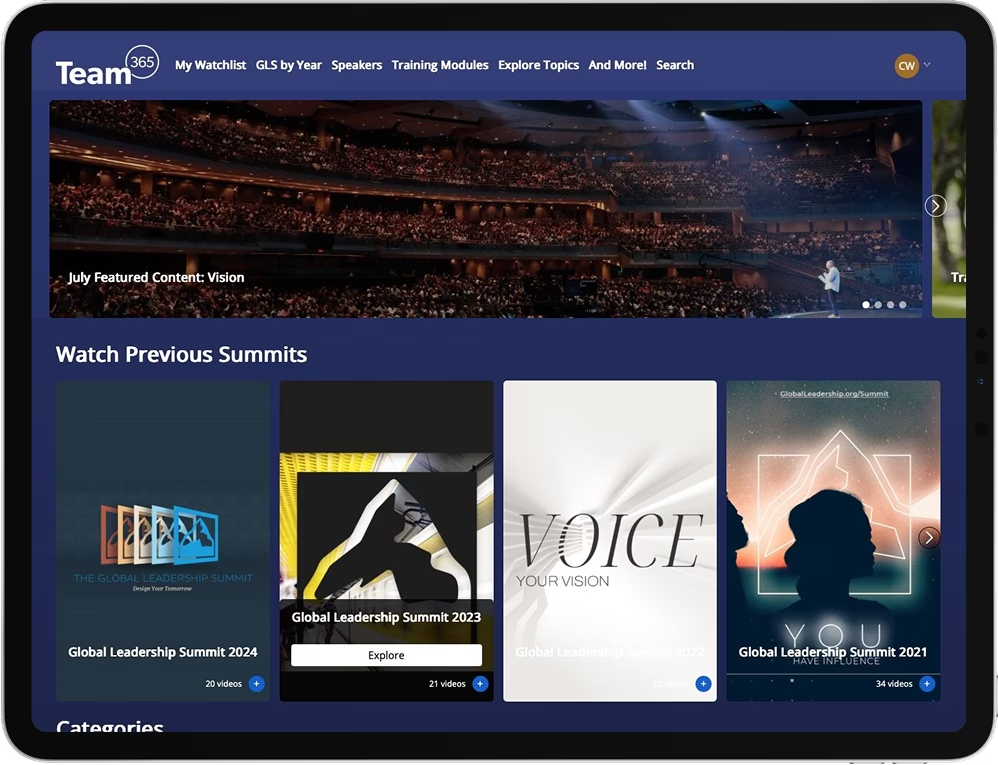We all know that identifying and deploying talented people is an essential skill for any leader. But knowing how to spot talent can also be a challenge.
Savvy leaders know that every person you hire impacts the culture of your organization. A good hire can have exponentially positive effects on your momentum. A poor hire can cost you significant time and resources for lost productivity and team morale...not to mention your sanity!
You’ve likely heard the mantra, “Hire slow, fire fast.” This quip exists for good reason. Building and developing your team is the most important work you’ll do as a leader. However, this work requires the discipline of intentionality to observe great talent and effectively recruit and empower it.
When you are able to pair the gifts of an individual with the needs of the organization, I believe something divinely beautiful happens. It’s an art form in which you’ve become the master. While from the outside looking in, it may appear like magic, talent scouting is far from a mysterious process. And extraordinary leaders know the key: being able to identify potential.
Great leaders see potential.
Potential by definition means you see possibility. You see what isn’t proven yet. This is perhaps the scariest of human resource gambles for us as leaders. When we hire on potential, we’re hiring on what we believe could be true about an employee. We’re claiming to see what others don’t see...oftentimes seeing something in the employee that they don’t even see in themselves. This requires high belief but it’s undergirded by keen discernment.
And lest you be concerned with relying solely on your intuition to identify potential, a Harvard Business Review piece defined potential as encompassing five key qualities: motivation, curiosity, insight, engagement and determination.
Here are the essential questions I have used to assess these five qualities in people.
1) Motivation
Does the candidate demonstrate a drive and commitment to get things done? Are they a self-starter? Do they show initiative for new projects or a willingness to take on more responsibility? Are they committed to their own personal growth and development? Do they seek out opportunities for continued education (formal or informal)?
2) Curiosity
Do they ask questions and request feedback? Are they eager to find new solutions to recurring problems? Do they show interest in others? Do they seek to understand the bigger picture? Are they quick to judge or are they interested in understanding someone else’s perspective?
3) Insight
Do they have good instincts? Can they see alternative solutions? Are they able to anticipate needs and adapt to change? Do they offer ideas and support to their peers? Are they aware of how they are perceived by others? Do they have a healthy perspective on their strengths while comfortably acknowledging their weaknesses? Do they own their responsibility in outcomes, both good and bad? Do they know how to build trust and foster relationships?
4) Engagement
Are they all in? Are they committed to the mission and vision of the organization? Are they dedicated to their team? Do they actively participate in conversations and step up to leadership opportunities when they arise? Are they respected by their peers for their ability to work together and learn from others? Do they work cooperatively with others and seek to understand the perspective of other team members?
5) Determination
Are they resilient? Can they rebound from a setback? Do they bring energy and optimism to team meetings? Do they engage a solution mindset to problem solving? Do they see roadblocks or just obstacles they have to find a way over?
Spotting potential, developing it and watching it flourish are some of my greatest joys as a leader. In my experience, the technical competency of an individual is secondary to the core elements of potential. Give me someone who has potential and I’ll invest the time and resources to teach them the competencies they need to succeed.
Potential is your secret weapon. Not only are you finding that proverbial “diamond in the rough,” but also by believing in someone’s potential you are planting seeds of belief and commitment that may lead to long-term dedication to you and the organization.
Related

The Paradoxical Superpower: Humility in Leadership

Meet David Ashcraft, Global Leadership Network CEO: A Passion for Leaders

How One Church Is Reshaping the Story of Its Town

The Tech CEO who sold his home to live with the formerly homeless

Self-Care Should Not Be Selfish: Why Leaders Thrive When They Look Beyond Themselves

Does your team have a microculture?
Leadership That Lasts
Team365 isn’t just a platform. It’s a commitment to grow, lead and live with purpose — every single day. Whether you’re here for content, community or clarity, you’re in the right place. Your leadership matters. Let’s keep going.





